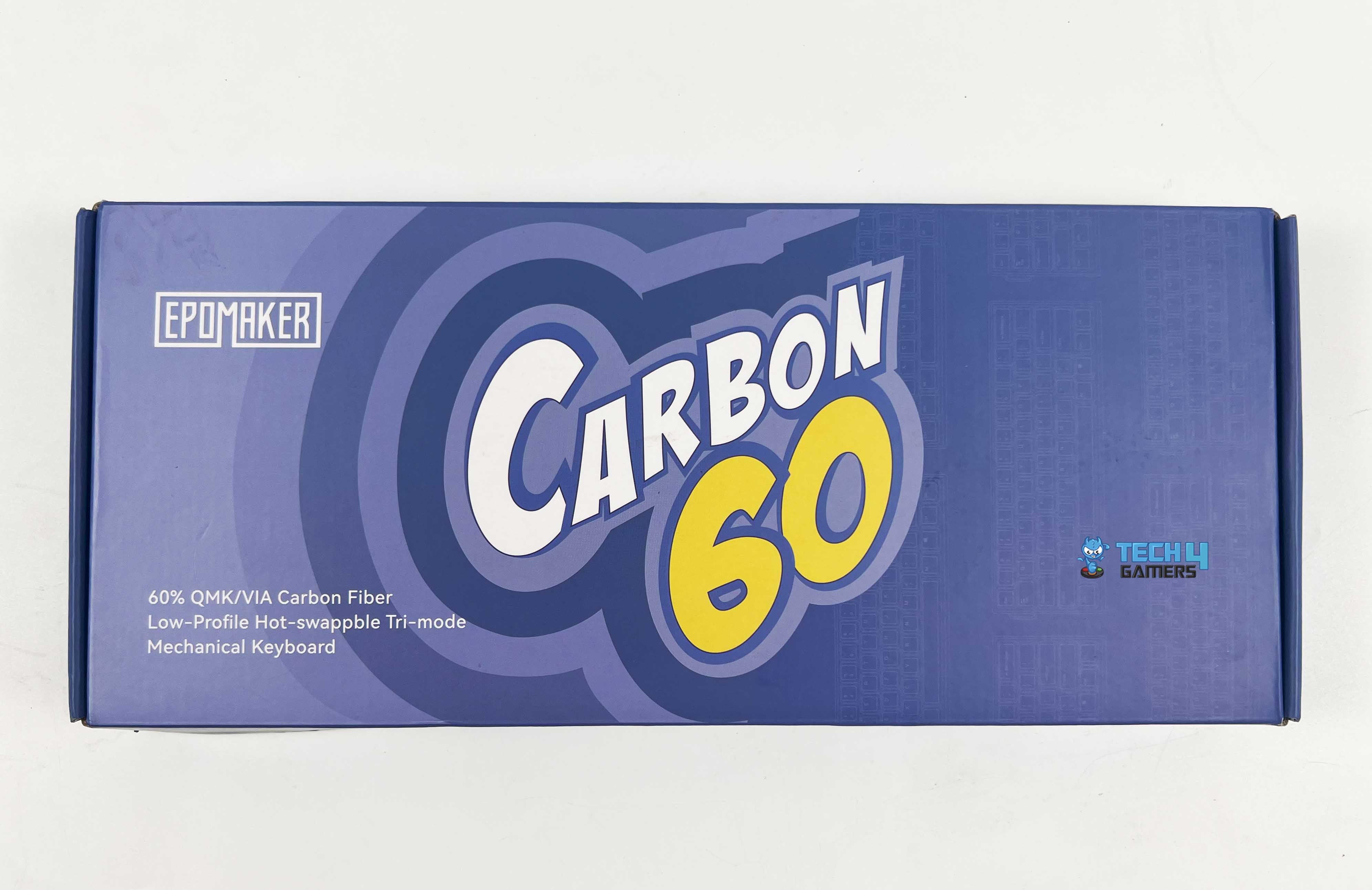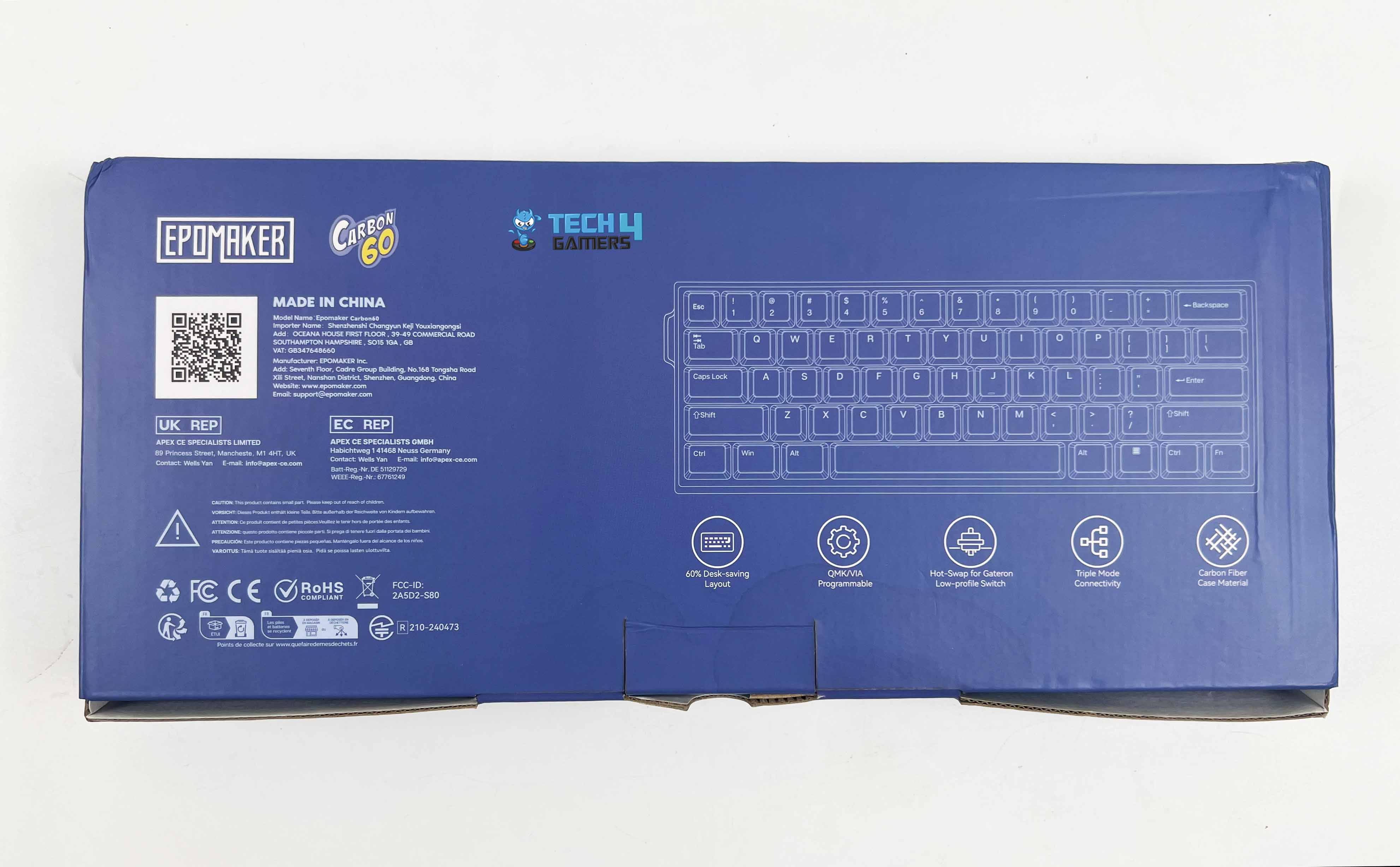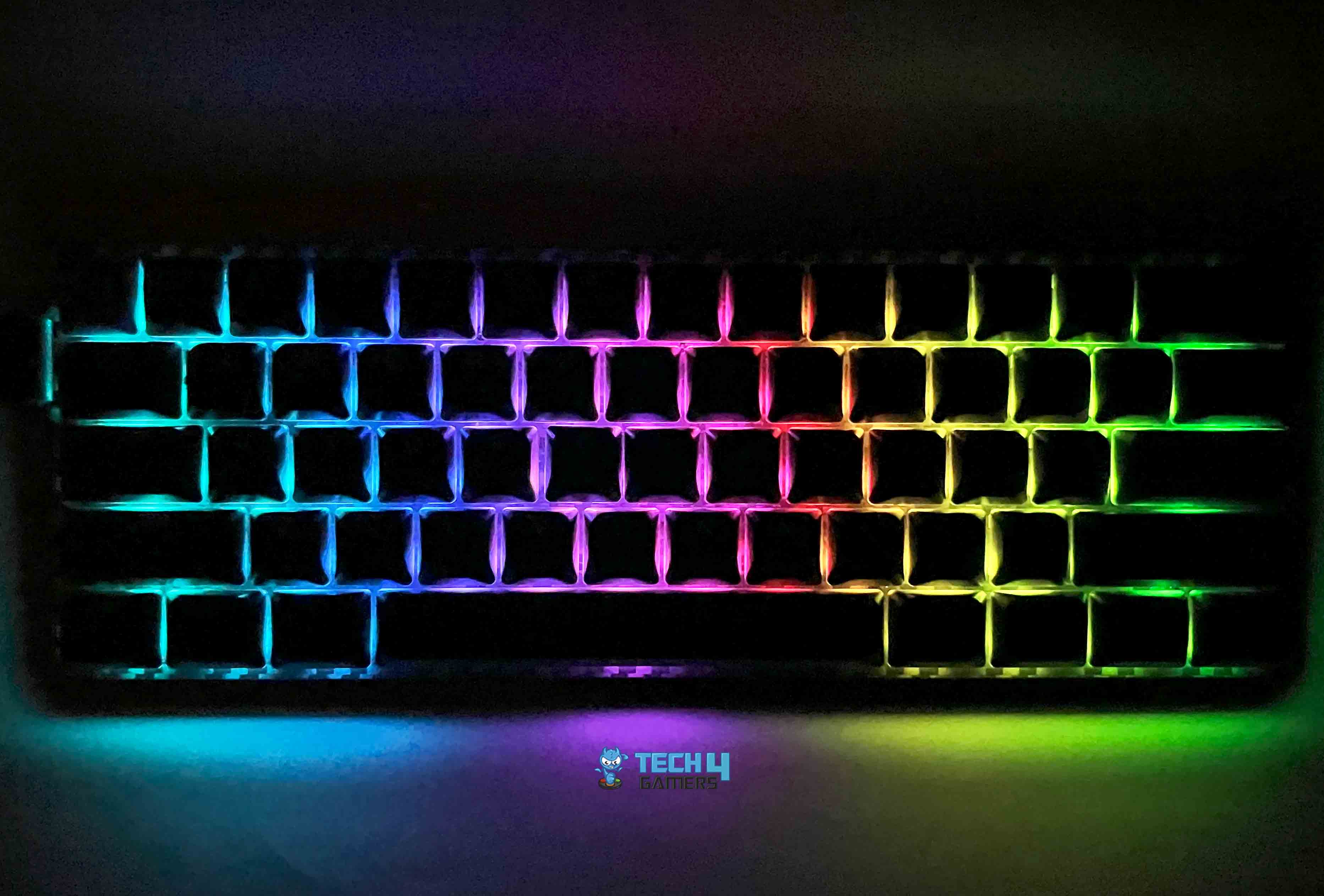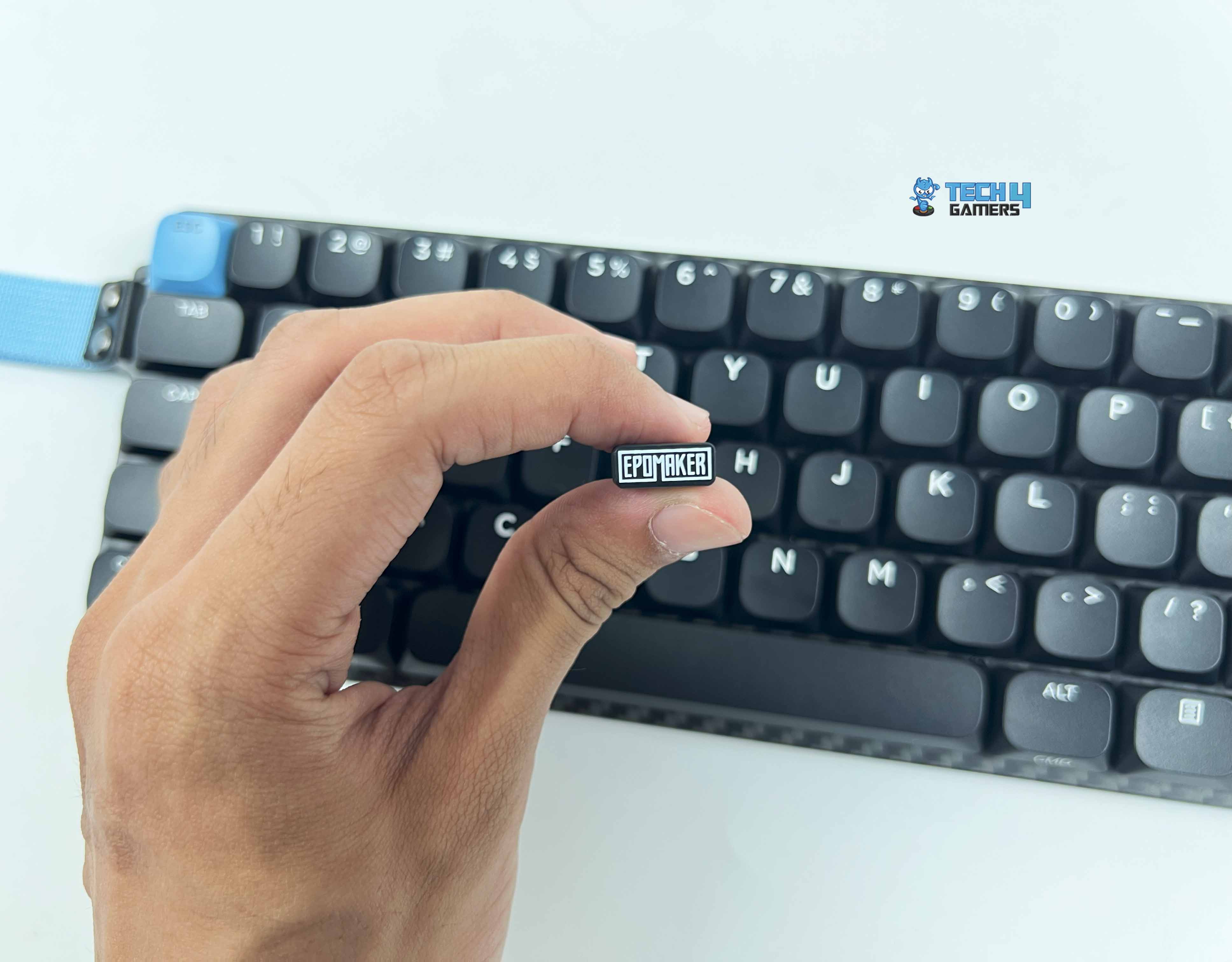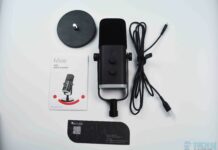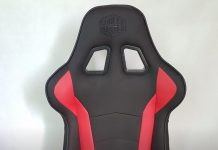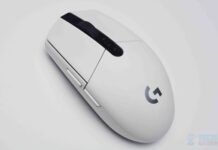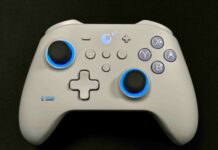Sleek, Light, and Packed with Features!
Review Summary
The Epomaker Carbon60 is a premium 60% keyboard that combines an ultra-light carbon-fiber chassis with tri-mode wireless connectivity and hot-swappable low-profile switches, delivering exceptional portability, durable build quality, and a satisfyingly muted thock sound signature. While it asks for a higher price and lacks tilt feet or dongle storage, its refined sound profile, extensive VIA programmability, and long battery life make it one of the most versatile compact keyboards available.
Tested For: 1.5 Weeks
Overall
-
Design - 9/10
9/10
-
Build Quality - 9.5/10
9.5/10
-
Typing Experience - 8.5/10
8.5/10
-
Customization & Software - 9/10
9/10
-
Portability - 9.5/10
9.5/10
Pros
- Sleek, lightweight design
- Minimalist 60% form factor
- Solid build quality
- Tri-mode connectivity
- Long battery life
- QMK/VIA support
Cons
- No adjustable feet
- ABS keycaps
- Bluetooth latency
- Complex software installation
- Price point
One of the recent products from Epomaker, a renowned keyboard manufacturer, is the talk of the town for an odd reason. There isn’t much more space for innovation in this market. Yet, Epomaker has successfully created its place in an unfamiliar marketplace for carbon-fibre keyboards with its new Carbon60. Does it have what is needed to become a delicate, portable, reliable keyboard? Continue reading to find out!
Key Takeaways
- The Epomaker Carbon60 is a lightweight 60% keyboard featuring a carbon-fiber chassis, tri-mode wireless connectivity, and hot-swappable low-profile switches, delivering an outstanding typing experience with deep sound dampening.
- You should consider the Epomaker Carbon60 if you value portability and durability, require wireless flexibility, and are a customization enthusiast.
- You should skip the Epomaker Carbon60 if you need an adjustable typing angle or wrist support, prefer PBT keycaps over ABS, and are on a tight budget.
Before we go any further, here are the Carbon60’s technical specifications taken from the manufacturer’s website:
| Specification | Detail |
| Layout | 60% ANSI US Layout |
| Number of Keys | 61 Keys |
| Connectivity | Type-C Cable, 2.4GHz, Bluetooth 5.0 |
| Compatibility | Mac/WIN/Linux |
| Battery | 3000mAh |
| Battery Life | 23.6 hours with Backlight on, and 176.4 hours with Backlight off. |
| Case Material | Carbon Fiber |
| Front Height | 22.5mm |
| Back Height | 26.7mm |
| Flex-Cut | No Flex-Cut |
| Plate Material | Carbon Fiber |
| Sound Dampening | 3 layers: Sandwich Pad, Switch Pad, Bottom Foam |
| Keycaps Profile | DSA Low Profile |
| Keycaps Material | ABS Plastic |
| Keycaps Manufacturing Technique | Double-Shot |
| Hot-swappable | Yes |
| RGB | South-facing, per-key RGB |
| Polling Rate | 1000Hz (USB, 2.4Ghz), 125Hz (Bluetooth 5.0) |
| Latency | 4ms (USB), 10ms (2.4Ghz wireless), 22ms (Bluetooth 5.0) |
| Anti-Ghosting | N-Key Rollover(Win)/6-Key Anti-Ghosting(Mac) |
| Keyboard Dimensions | 297*102.3*26.7mm |
| Keyboard Weight | 0.5kg |
What Makes The Epomaker Carbon60 Different?
As different from Epomaker’s previous Lite 60% keyboard, which featured a heavy CNC-machined aluminum body and gasket-mounted design, the Carbon60 is Epomaker’s first attempt at a true carbon fiber built, giving the keyboard an ultra-rigid yet lightweight chassis that is resistant to scratches. It also shaves weight down to merely 0.5kg. While the aluminum materials provide only durability, the Carbon60’s carbon fiber build provides better portability with the same durability in a way that typical plastic or aluminum castings can’t match.
Packaging & Unboxing
The Epomaker Carbon60 packaging uses a blue palette that complements the keyboard’s branding. The front boldly displays the Carbon60 name in strong typography, with the number 60 highlighted in yellow. The shades of blue are used throughout the rest of the packaging, providing an appealing contrast to the yellow numbers. The front of the package highlights a few significant features, such as the 60% size, QMK/VIA compatibility, and more. Lastly, the back of the package provides further details about the extra features.
Box Contents
Here is the list of everything you’ll find inside the box:
- Epomaker Carbon60
- Type-C Cable
- User Manual
- Keycap Puller
- Extra Switches & Keycaps
Design
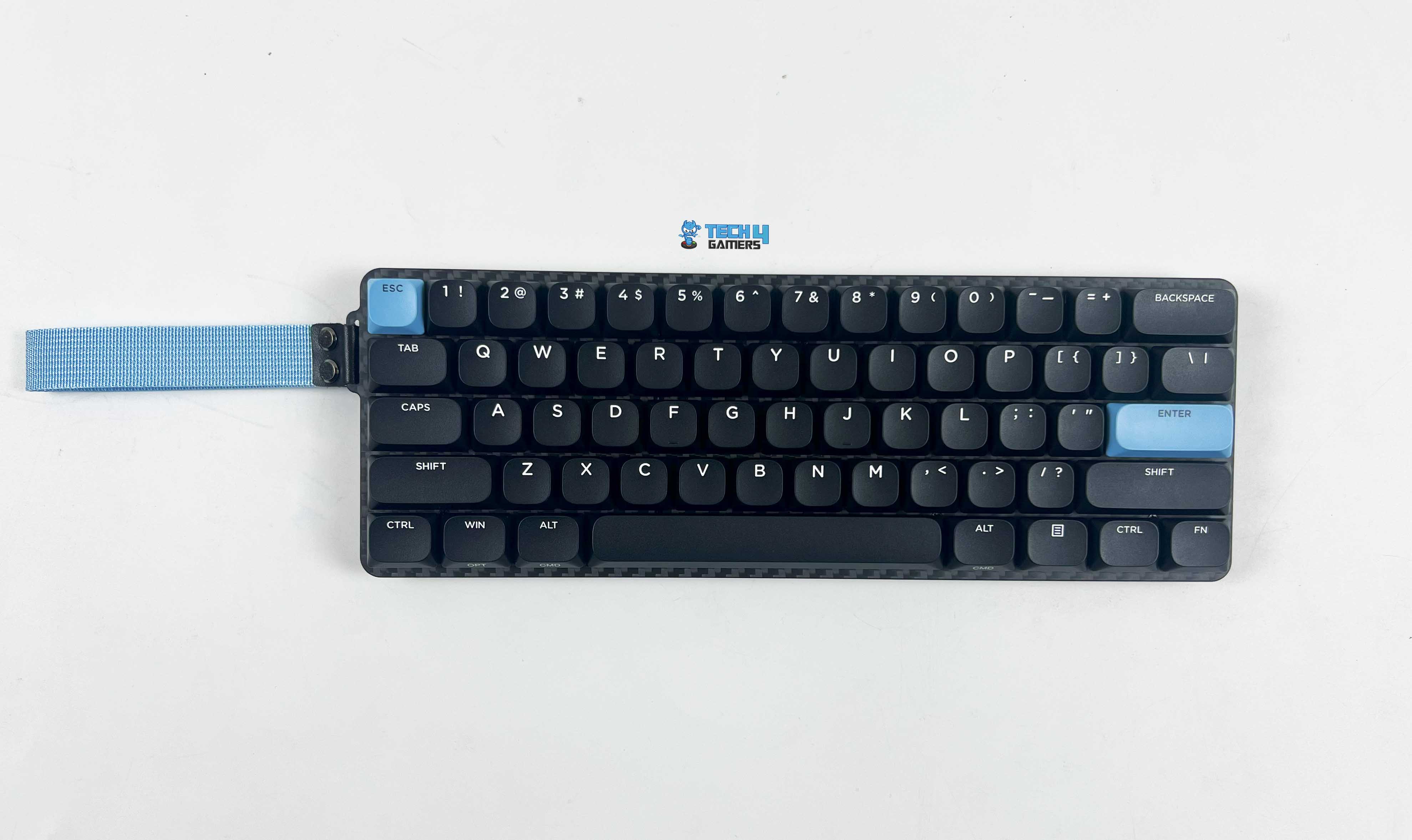
The Epomaker Carbon60 has a simple appearance. The blue accents on the keys and strap add a pleasing element to the mostly black design. You will immediately notice its distinctive carbon fiber texture on the back, side, and underneath the keys. With its carbon fiber casing, the Carbon60 lives up to its name. The weight of this keyboard is another perk and makes it different from others.
With minimal flex and a reasonable weight of 0.5 kg, this keyboard is among the lightest available. Epomaker achieved this weight by using a carbon fiber casing, which not only offers durability but also greatly improves portability. I was pleasantly surprised to find out how portable the keyboard was when I first held it in my hands. Lastly, the keyboard dimensions are 297*102.3*26.7mm (W*D*H).
Underside

The exact same carbon fiber aesthetic continues throughout the keyboard’s bottom, with the blue color highlighting the text. It is quite unfortunate that the Carbon60 does not have extendable feet. For a more pleasant typing experience, I prefer a keyboard with a slight tilt. Additionally, there is no wrist rest, which makes sense given its size and design.
As compared to other Epomaker keyboards, in which plastic clips keep the keyboard together, several screws are used here. They are located beneath each one of the rubber feet.
However, Epomaker does give some details on what’s within. A sandwich pad, switch pad, and bottom foam are the three layers that make up the keyboard. These serve a number of purposes, including dampening and softening the sound of the keys and minimizing hollow or resonant sounds.
Layout

The total number of keys on the Epomaker Carbon60 is sixty-one. It has a 60% ANSI US layout, which is typical for a keyboard of this size. The number row at the top allows you to shortcut between the number and F-row keys. There aren’t any arrow keys, nor is there a navigation cluster. The intent of this layout is to deliver the maximum functionality in a small form factor.

However, there are various secondary functions present. For instance, to use the arrow keys, you can press the function key together with other keys. This functionality also provides access to media controls. Many shortcuts are listed in the manual, which can be read to understand the Epomaker Carbon60’s secondary features.
Keycaps
The Epomaker Carbon60 keycaps are made of ABS plastic. They are less expensive to manufacture than PBT keys, as they are frequently considered to be less sturdy and more inclined to get greasy over time. Each keycap has a huge print of the legend in the middle. Epomaker’s wise decision to print the Mac legends on the side facing south was a good one. For instance, the WIN key has OPT written on the side facing south.
This approach reduces clutter on top of the keys, and an additional legend can be seen clearly. The keycaps are DSA Low-Profile, which offers a reduced travel distance and an even surface that provides a bloated feel for a quieter typing experience. The key’s low profile gives it a sleek and simple appearance. While these may be more ergonomically enjoyable. They are not appropriate for intensive gaming requirements. Lastly, the keycaps are easy to remove using the provided keycap puller.
RGB Lighting
The Keycaps are evenly lit thanks to the RGB LEDS below them that face south. Similarly, shortcut keys on the keyboard can be used to adjust all of the lighting settings. To adjust the level of brightness, speed, and various lighting effects, you can use the function key in combination with a variety of other keys.

When you have a static color chosen, you can pick from seven different colors. Additionally, you can switch between eight different lighting patterns, such as breathing, reactive, static, and a rainbow wave that moves back and forth over the keyboard. Overall, the Carbon60’s lighting appears beautiful and even.
Switches

| Switch Name | Gateron Low Brown Switch 2.0 |
| Switch Type | 3-pin Tactile |
| Operating Force | 55±15gf |
| Bottom-out Force | 60±5gf |
| Pre-travel | 1.7±0.4mm |
| Total Travel | 3.2+0.2mm |
| Stem | POM |
| Top housing | PC |
| Bottom housing | Nylon PA66 |
| Spring | 13.5mm two-stage spring |
| Factory lubed | Yes |
The Epomaker Carbon60 is available with two switches, including the Gateron Low Red Switch 2.0 and Gateron Low Brown Switch 2.0. I have the latter in my review unit. The two switches’ travel feel is one of their main differences. The Red switches feel linear and lack a bump. On the other hand, the Brown switches are tactile and have a tiny bump when you press down. The actuation force is the other significant factor.
The brown switch requires more force to press than the red switch. As usual, the key switch features multiple components, including two outer housings. The key can be activated by pressing down on the main stem. A two-stage spring with a length of 13.5 mm is located inside the switch. The switches have a POM stem with a nylon PA66 bottom housing and a polycarbonate top housing. By default, the switches are lubricated.
Connectivity
The keyboard can be connected by Bluetooth, 2.4GHz wireless, or cable. A USB Type-C cable connects straight to the keyboard’s back and your computer. According to Epomaker, this connection’s latency is 4 ms. Furthermore, the 2.4GHz wireless receiver is the second choice. Once you flip the switch on the rear to on, this connects wirelessly to the keyboard and plugs into your computer. You can also read our guide on the best wireless gaming keyboards to explore more options.
This connection has a latency of 10 ms. Lastly, the Bluetooth connection has a latency of 22 ms. When typing was my main concern, the Bluetooth connection performed admirably. Thankfully, I had no trouble using any of the above-mentioned connectivity options. Notably, the lack of storage space for the wireless receiver is a drawback. It should have room for storage because it’s quite small, which makes it easy to misplace.
Battery Life
The Carbon60 has a 3000mAh battery with a stated battery life of 23.6 hours while the backlight is on and 176 hours when it is off. I was able to use it for almost 26 hours during my testing while having the backlight on, which is a little longer than the recommended duration. With the backlight off, the battery has lasted even longer. Additionally, I tested with various lighting settings, which have an impact on the speed at which the battery drains.
Typing Experience
As the above video shows, the Epomaker Carbon60 has an excellent sound. Compared to various keyboards I’ve used, the sound isn’t very deep, but it’s also not exceptionally loud. I found that the Gateron Low Profile Brown 2.0 switches feature a slightly pronounced tactile bump, offering purposeful feedback without feeling uncomfortable even during long typing sessions.
While not as silent as custom silent tactile, they maintain a lower-pitched, thocky acoustic profile. With the Epomaker Carbon60, typing is generally satisfactory. It took me some time to get comfortable with the feeling of the outer edges of the surrounding keys while typing. Although I didn’t accidentally activate surround keys. Still, getting familiar with the design of these low-profile DSA keycaps took a while.
Software
The QMK/VIA compatibility of this keyboard is a great feature since it’s essential for a 60% keyboard such as this one. It has several layers, and each keystroke can be easily customized. For instance, you can remap the keys to map the F-row keys or missing keys that are commonly seen on a full-sized or 75% keyboard. You can spend time playing around with layers till you find something that fits you.
To download, the first step is to get VIA from GitHub. Additionally, for VIA to properly detect the keyboard, you must download an additional file from Epomaker’s official website. Generally, this compatibility is preferable for keyboard enthusiasts. However, the experience isn’t exactly effortless or user-friendly for new users.
Should You Buy It?
Buy It If
✅ You want both portability and durability: The carbon-fiber chassis makes the Carbon60 one of the lightest yet durable 60% keyboards you can carry.
✅ You require wireless flexibility: Tri-mode connectivity (USB-C, 2.4 GHz, Bluetooth 5.0) plus long battery life means you can swap between devices and work anywhere.
✅ You’re a customization enthusiast: Hot-swappable Gateron Low Profile switches and full QMK/VIA support let you remap every key and experiment with different switch types.
Don’t Buy It If
❌ You need an adjustable typing angle or wrist support: There are no extendable feet or included wrist rest, so the board sits completely flat.
❌ You prefer PBT keycaps over ABS: The stock ABS caps may develop shine and grease over time, which can bother some users.
My Thoughts
The Epomaker Carbon60 combines the positive aspects of a 60% layout with the functionality of a full-sized keyboard through its QMK/VIA programmability. Furthermore, wireless connectivity makes the keyboard even more portable. It is well-built and durable without being hefty, thanks to the carbon fiber material used in the outer housing. With an outstanding typing experience, it is also excellent for daily use.
It had a good battery life, which is important when using a portable keyboard like this. In my opinion, pricing is the only slight negative. The Carbon60 costs $129.99, which is quite a bit of money for a keyboard with a 60% layout. But if portability is your top priority, then the pricing would be worth it, especially if you’re interested in a slim, minimalistic keyboard.
Coming Next: Epomaker RT80 Review
Thank you! Please share your positive feedback. 🔋
How could we improve this post? Please Help us. 😔
[Hardware Reviewer]
After many years of exploiting various pieces of hardware, Abdul Hannan now serves as an editor at Tech4Gamers. He’s been in the PC hardware reviewing industry for almost a decade, and his staff of passionate geeks and reviewers is second to none.
Abdul Hannan is constantly seeking new methods, you will always see him running into New Computer Courses to improve the performance of his computer components since he is an ardent overclocker. He is well-known for providing the most extensive and unbiased analysis of the newest and greatest hardware for PC gaming, including everything from GPUs to PSUs.


 Threads
Threads
